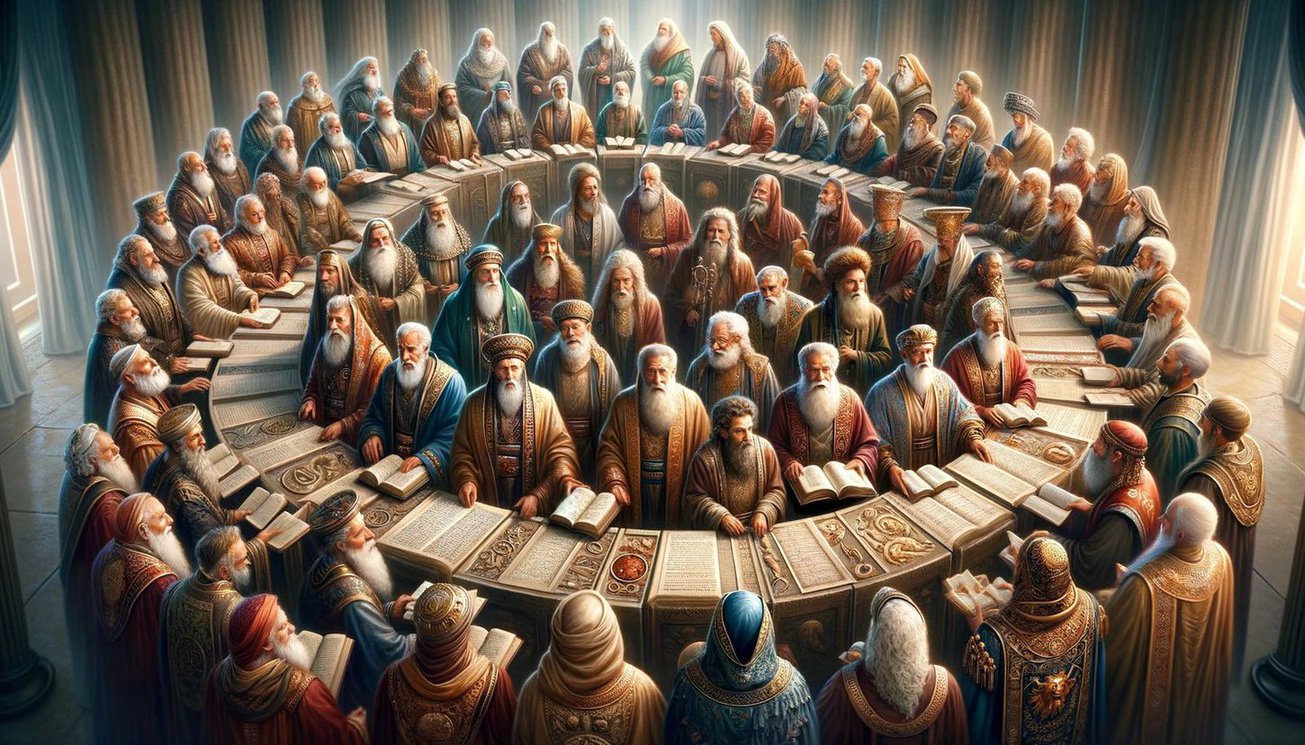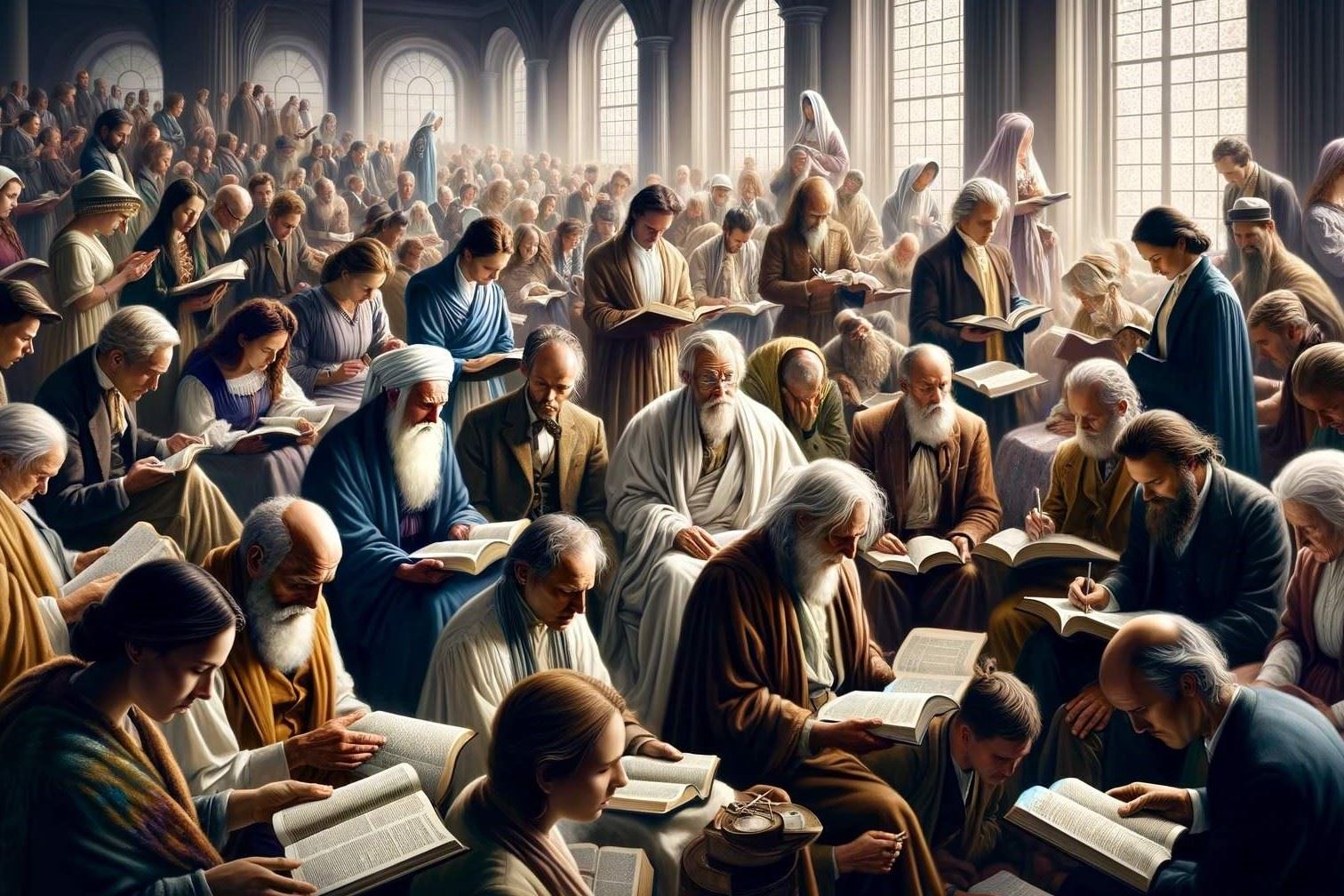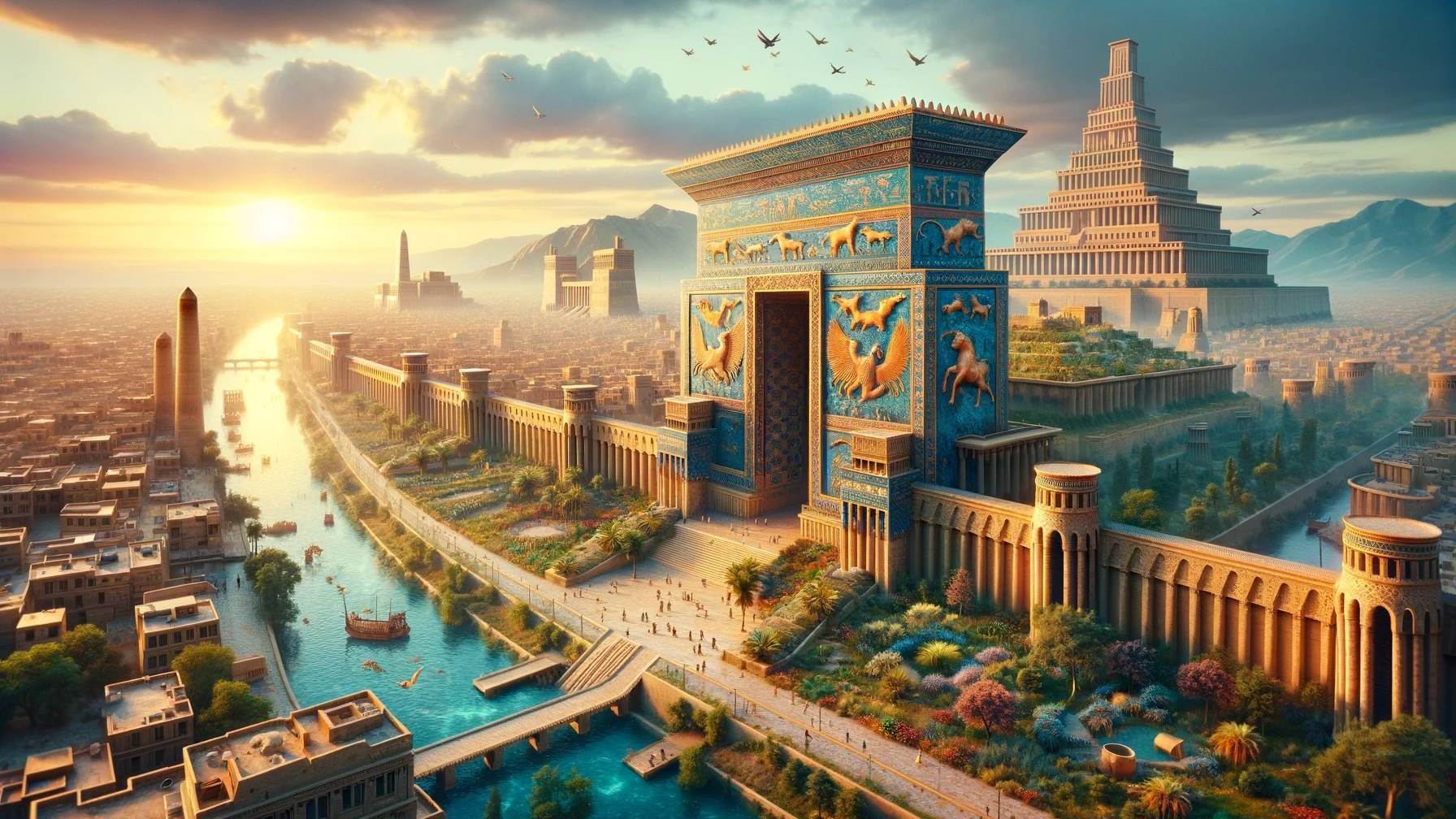Home>Bible Facts>Who Are The 24 Elders In The Book Of Revelation


Bible Facts
Who Are The 24 Elders In The Book Of Revelation
Published: February 11, 2024
Peter Smith, Editorial Director at Christian.net, combines deep insights into faith, politics, and culture to lead content creation that resonates widely. Awarded for his contributions to religious discourse, he previously headed a major organization for religious communicators, enhancing dialogue on faith's societal impacts.
Discover the truth about the 24 elders in the Book of Revelation and explore fascinating Bible facts about their significance and role in biblical prophecy. Uncover the mystery and significance of these enigmatic figures.
(Many of the links in this article redirect to a specific reviewed product. Your purchase of these products through affiliate links helps to generate commission for Christian.net, at no extra cost. Learn more)
Table of Contents
Introduction
The Book of Revelation, the final book of the New Testament, is a profound and enigmatic text that has captivated readers for centuries. Among its many mysterious elements, the mention of the 24 elders has sparked intense curiosity and speculation. These elders are introduced in Revelation 4:4, where John describes a scene in heaven, stating, "Surrounding the throne were twenty-four other thrones, and seated on them were twenty-four elders."
The mention of these elders has led to a myriad of interpretations and theories, as their identity and significance remain shrouded in mystery. The 24 elders are a subject of fascination and intrigue for theologians, scholars, and believers alike, prompting a deep dive into the scriptures and historical context to unravel their enigmatic presence.
In this article, we will embark on a journey to explore the intriguing realm of the 24 elders in the Book of Revelation. We will delve into the various interpretations and theories surrounding their identity, shedding light on the diverse perspectives that have emerged over time. By unraveling the layers of speculation and delving into the historical and cultural backdrop of the text, we aim to gain a deeper understanding of the significance of the 24 elders and their role in the apocalyptic visions presented in the Book of Revelation.
Join us as we embark on a thought-provoking exploration of this captivating subject, seeking to unravel the mysteries that enshroud the 24 elders and gain insight into their symbolic and theological implications within the context of the Book of Revelation.
Read more: Who Was The Book Of Revelation Written For?
The 24 Elders in the Book of Revelation: A Brief Overview
The 24 elders, as depicted in the Book of Revelation, occupy a significant and enigmatic position within the apocalyptic narrative. Their introduction in Revelation 4:4 presents a scene of celestial grandeur, with John's vision portraying them seated on thrones surrounding the central throne, adorned in white garments and wearing crowns of gold. This imagery evokes a sense of regal authority and divine reverence, setting the stage for the unfolding cosmic drama that permeates the book.
The symbolic representation of the elders as revered figures in the heavenly realm has sparked diverse interpretations and speculations regarding their identity and role. Their depiction as elders, adorned in royal attire and positioned in close proximity to the divine throne, suggests a profound significance within the celestial hierarchy. The number 24, often associated with the 12 tribes of Israel and the 12 apostles, further adds to the mystique surrounding their identity, prompting various theological and symbolic interpretations.
The 24 elders are commonly viewed as representatives of the redeemed and glorified saints, symbolizing the culmination of God's redemptive plan and the exaltation of believers in the heavenly realm. Their proximity to the central throne signifies their intimate connection to the divine presence, reflecting the concept of co-regency and participation in the divine rule. This portrayal aligns with the overarching theme of victory and triumph in the face of eschatological upheaval, emphasizing the ultimate vindication and exaltation of the faithful.
Furthermore, the imagery of the elders offering worship and casting their crowns before the throne underscores their role as adoring participants in the celestial chorus, magnifying the glory and sovereignty of the divine ruler. Their harmonious praise and reverent gestures symbolize the eternal adoration and submission to the divine will, encapsulating the profound sense of awe and reverence that permeates the heavenly realm.
The enigmatic presence of the 24 elders serves as a captivating focal point within the cosmic tapestry of the Book of Revelation, inviting contemplation and interpretation regarding their symbolic significance and theological implications. Their portrayal as exalted figures in the celestial hierarchy, adorned in regal attire and participating in worship, evokes a sense of divine grandeur and cosmic harmony, enriching the apocalyptic narrative with layers of symbolic depth and theological resonance.
Interpretations of the 24 Elders
The enigmatic presence of the 24 elders in the Book of Revelation has sparked a myriad of interpretations and theological perspectives, each seeking to unravel the mystery surrounding their identity and significance within the celestial realm. These interpretations offer diverse insights into the symbolic, theological, and eschatological dimensions of the elders, enriching the apocalyptic narrative with layers of meaning and theological resonance.
-
Representatives of the Redeemed: One prevalent interpretation posits that the 24 elders symbolize the redeemed and glorified saints, representing the collective assembly of believers who have been exalted and vindicated in the heavenly realm. This perspective aligns with the overarching theme of victory and triumph over adversity, emphasizing the ultimate fulfillment of God's redemptive plan and the exaltation of the faithful in the divine presence.
-
Symbolic Unity of Old and New Testament: Another compelling interpretation associates the 24 elders with the symbolic unity of the Old and New Testament covenant communities. The number 24, derived from the combination of 12 tribes of Israel and 12 apostles, signifies the convergence of the historical and eschatological dimensions of God's redemptive work, symbolizing the continuity and fulfillment of divine promises throughout salvation history.
-
Heavenly Council or Angelic Representatives: Some interpretations propose that the 24 elders represent a celestial council or angelic beings who participate in the divine governance and cosmic administration. This perspective emphasizes their role as co-regents and participants in the divine rule, reflecting the concept of heavenly governance and the harmonious alignment with the divine will in the celestial hierarchy.
-
Symbolic Representation of Creation: A thought-provoking interpretation views the 24 elders as symbolic representatives of creation, embodying the cosmic order and harmony that reverberates throughout the heavenly realm. Their regal attire, adorned with crowns and white garments, symbolizes the cosmic restoration and glorification of creation, reflecting the profound interconnectedness between the celestial and terrestrial realms.
These diverse interpretations offer a rich tapestry of perspectives on the identity and significance of the 24 elders, illuminating the multifaceted symbolism and theological depth embedded within their enigmatic portrayal in the Book of Revelation. As scholars and theologians continue to engage with these interpretations, the mystery of the 24 elders persists, inviting contemplation and exploration into the profound mysteries of the celestial realm and the eschatological fulfillment of God's redemptive purposes.
Theories and Speculations Surrounding the Identity of the 24 Elders
The enigmatic presence of the 24 elders in the Book of Revelation has ignited a plethora of theories and speculations regarding their identity, prompting fervent scholarly discourse and theological contemplation. These theories, rooted in diverse interpretive frameworks and theological perspectives, seek to unravel the mystery shrouding the celestial figures and shed light on their symbolic significance within the apocalyptic narrative.
-
Representatives of the Tribes and Apostles: One prevalent theory posits that the 24 elders symbolize the collective representation of the 12 tribes of Israel and the 12 apostles, signifying the convergence of the Old and New Testament covenant communities. This interpretation underscores the continuity and fulfillment of God's redemptive plan, encapsulating the unity and culmination of divine promises throughout salvation history.
-
Exemplars of Heavenly Worship: Another compelling speculation views the 24 elders as exemplars of heavenly worship and adoration, embodying the eternal chorus of praise and reverence that permeates the celestial realm. Their harmonious worship and reverent gestures symbolize the eternal adoration and submission to the divine will, reflecting the profound sense of awe and reverence that characterizes the heavenly realm.
-
Embodiment of Cosmic Order and Harmony: A thought-provoking theory suggests that the 24 elders serve as symbolic embodiments of cosmic order and harmony, reflecting the divine restoration and glorification of creation. Their regal attire, adorned with crowns and white garments, symbolizes the cosmic renewal and the harmonious alignment between the celestial and terrestrial realms, emphasizing the interconnectedness and divine sovereignty over the entire cosmos.
-
Heavenly Council and Divine Governance: Some speculations propose that the 24 elders represent a celestial council or angelic beings who participate in the divine governance and cosmic administration. This perspective emphasizes their role as co-regents and participants in the divine rule, reflecting the concept of heavenly governance and the harmonious alignment with the divine will in the celestial hierarchy.
These theories and speculations offer a kaleidoscope of perspectives on the identity and significance of the 24 elders, enriching the apocalyptic narrative with layers of symbolic depth and theological resonance. As scholars and theologians continue to engage with these theories, the mystery of the 24 elders persists, inviting contemplation and exploration into the profound mysteries of the celestial realm and the eschatological fulfillment of God's redemptive purposes.
Conclusion
The enigmatic presence of the 24 elders in the Book of Revelation continues to captivate the hearts and minds of scholars, theologians, and believers, inviting a profound exploration of their symbolic significance and theological implications. As we navigate the diverse interpretations, theories, and speculations surrounding the identity of the 24 elders, we are confronted with a tapestry of perspectives that enrich the apocalyptic narrative with layers of meaning and theological resonance.
The portrayal of the 24 elders as exalted figures in the celestial hierarchy, adorned in regal attire and participating in harmonious worship, evokes a sense of divine grandeur and cosmic harmony, underscoring their profound role within the celestial realm. Whether viewed as representatives of the redeemed, exemplars of heavenly worship, or embodiments of cosmic order and harmony, the 24 elders stand as enigmatic symbols of the eschatological fulfillment and the divine sovereignty that permeates the cosmic tapestry of the Book of Revelation.
As we contemplate the mystery of the 24 elders, we are drawn into a deeper understanding of the cosmic drama unfolding within the apocalyptic visions, where the celestial realm converges with the terrestrial domain, and the divine plan of redemption reaches its climactic fulfillment. Their presence serves as a poignant reminder of the ultimate triumph of God's redemptive purposes and the exaltation of the faithful, resonating with themes of victory, restoration, and divine sovereignty that permeate the apocalyptic narrative.
In the midst of diverse interpretations and speculations, the enigmatic allure of the 24 elders endures, beckoning us to delve into the profound mysteries of the celestial realm and the eschatological fulfillment of God's redemptive promises. Their symbolic significance transcends mere speculation, inviting us to contemplate the eternal truths and theological profundity embedded within their enigmatic portrayal, as we journey through the cosmic tapestry of the Book of Revelation, seeking to unravel the mysteries that enshroud the 24 elders and gain insight into their profound significance within the divine narrative of redemption and restoration.















